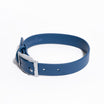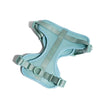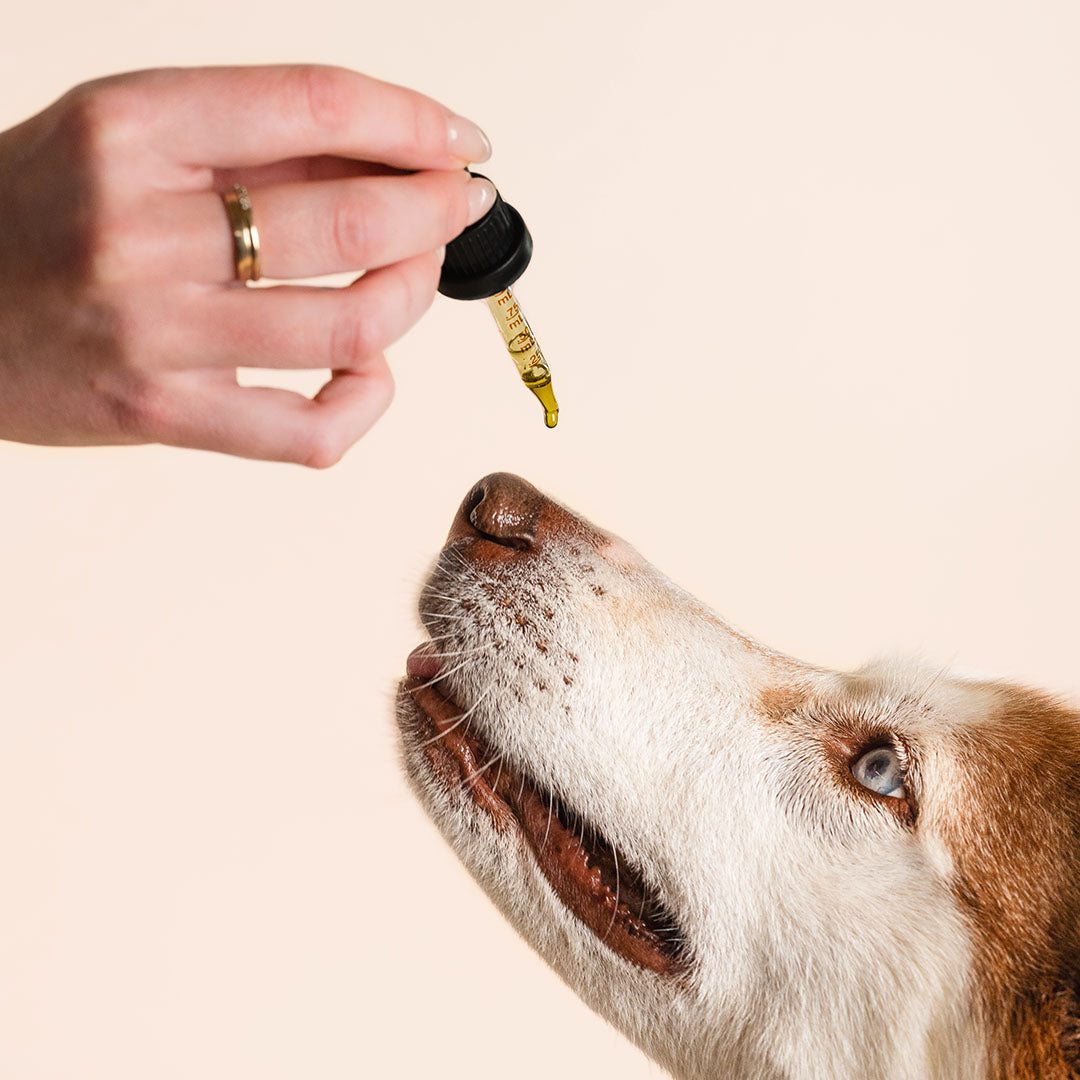What does a dog seizure look like? This is a question every pet owner should be aware of. It can be a little scary if you have never seen one before. But, knowing the signs can help you make intuitive decisions if an episode occurs.
Seizures happen because of sudden changes inside a dog's brain that cause unusual movements. Some dogs fall over and paddle their legs like they are swimming. Others might just stare into space or twitch a little bit.
About one in twenty dogs will have a seizure at some point in their life and knowing the symptoms helps in emergencies. Stick around because we are about to break down the signs, share some facts, and make you feel way more ready to help your pup.
What Is a Seizure in Dogs?
A seizure in dogs happens when abnormal electrical activity goes wild inside a dog's brain. It can cause odd behavior, uncontrollable shaking, or even loss of consciousness. Some common causes include idiopathic epilepsy, low blood sugar, exposure to a toxic substance, and head trauma.
Seizures in dogs are not rare. About five percent of all dogs will experience them during their lifetime, according to the American Kennel Club. Some breeds are even more likely to have recurring seizures than others, such as Beagles, Border Collies, German Shepherds, Labrador Retrievers, Golden Retrievers, and Belgian Tervurens.
Early Warning Signs Before a Seizure

Dogs often show subtle clues before a seizure strikes. If you notice these signs, pay close attention; your dog may need immediate veterinary care soon if an episode occurs:
-
Sudden nervousness or nonstop pacing
-
Acting clingy and needing extra cuddles
-
Confused staring or seeming spaced out
-
Drooling excessively or licking lips a lot
-
Whining loudly or hiding in tight corners
These signs can be unrelated to a seizure, however, they may also be an indication a seizure may soon happen, especially if the dog has a history of having them. Dog seizures can sneak up fast, so knowing what to watch for helps pet owners stay calm. Paying attention to early signs could make a big difference for your dog's health and comfort.
Physical Symptoms During a Seizure Episode

When dog seizures happen, they can bring a wild mix of movements, sounds, and body changes. Some pet parents get scared because the whole body seems to move in ways that are not normal.
The next few sections will help you understand what happens during these moments. Knowing what a dog seizure looks like can make a huge difference when your dog needs you most.
Involuntary Movements and Muscle Activity
During seizures in dogs, strange body movements take over without warning. These signs can look dramatic but knowing what to expect helps pet owners stay calm and ready to act.
- Full-Body Convulsions or Jerking Movements. Dogs may shake or jerk all over like they are being controlled by invisible strings. This uncontrollable shaking is one of the most common signs of abnormal electrical activity inside the dog's brain.
- Rigid Limbs or Arched Back. The dog's body might stiffen so much that their legs stick straight out or their back arches like a bow. Many dogs show this right at the start of a grand mal seizure.
- Paddling of the Limbs. You might see your dog lying on their side, moving their legs like they are swimming through the air. This paddling movement is a strong clue that seizures tend to affect the entire body.
- Sudden Head Movements or Tilting. Some dogs quickly jerk or tilt their heads to one side during a seizure. This odd behavior can make it look like they are reacting to something only they can see.
Loss of Conscious Control
Seizures often rob dogs of normal control over their bodies. Watching these changes can be tough, but understanding them helps pet parents stay calm and jump into action faster.
- Collapsing or Falling Over. Many dogs suddenly lose balance and crash to the floor without warning. The fall itself can be scary, but it usually happens because the dog's brain loses control over the body for a moment.
- Loss of Bladder or Bowel Control. During strong seizures like generalized seizures, dogs might accidentally urinate or defecate. This is a normal reaction and not something the dog can control.
- Drooling or Foaming at the Mouth. Excessive drooling or bubbles forming around the dog's mouth can happen. It is caused by muscle spasms and changes in the way the dog's mouth moves during the event.
Eye and Facial Changes
Seizures do not just affect the body; they often show up in the face too. Watching your dog's eyes and the sounds they make can give you even more clues about what is happening.
- Dilated Pupils or Rapid Eye Movement (Nystagmus). The pupils might get really big and move quickly from side to side. These fast eye movements are a classic sign of trouble inside the dog's brain.
- Vocalizations Such As Barking, Whimpering, or Growling. Dogs may make strange sounds like barking, whining, or low growls without meaning to. These noises come from the dog's body reacting to the confusion and discomfort during a seizure.
Behavioral Signs of Seizures in Dogs

Dog seizures do not always start with a big collapse. Sometimes, strange behaviors pop up before or after the shaking. Many dogs show odd behavior like zoning out, acting confused, or getting jumpy after a seizure ends. Watching these clues helps pet owners stay alert and get veterinary care fast.
Staring Into Space or "Zoning Out"
Some dog seizure symptoms are easy to miss at first. Your dog might suddenly stop playing and just stare at nothing for a few seconds. This frozen moment happens because the dog's brain experiences abnormal electrical activity.
Pet owners sometimes think their dog is daydreaming, but this behavior can mean partial seizures or focal seizures are starting. Quick spotting of these signs can help you control seizures sooner.
Temporary Confusion or Wandering
After seizures in dogs, many pups wander around like they forgot where they were going. This confusion happens because the brain is still trying to reset itself after the unusual movements. Some dogs bump into walls, pace in circles, or just seem lost. This type of behavior is common after a grand mal seizure or cluster seizure. Watching closely helps you track your dog's health and report details to your veterinarian immediately.
Unusual Aggression or Fearfulness Afterward
Some dogs feel scared or upset after a seizure. This fear might make a normally sweet dog growl, bark, or even snap without warning. These behaviors happen because seizures tend to confuse the dog's senses and make them feel unsafe.
Pet parents should remain calm and avoid crowding the dog during this time. Give your dog space and let them recover while you monitor them and plan what actions to take next.
Types of Seizures Seen in Dogs

Seizures in dogs can show up in a few different ways. Knowing the type helps pet owners and vets figure out the best way to address seizures and support the dog's health.
- Generalized (Grand Mal) Seizures. This type affects the dog's entire body and usually causes uncontrollable shaking, stiffness, and losing consciousness. Grand mal seizures are the most common cause of dramatic episodes in dogs.
- Focal (Partial) Seizures. These seizures start in one part of the dog's brain and cause unusual movements like head tilts or twitching in just one limb. Some focal seizures can turn into full-body seizures later.
- Cluster Seizures. Cluster seizures happen when a dog experiences more than one seizure within a short time, usually within twenty-four hours. Immediate veterinary care is critical if cluster seizures start happening.
- Idiopathic or Unknown-Origin Seizures. Idiopathic epilepsy means the seizures do not have a clear cause, like brain tumors or head injury. Many dogs with idiopathic epilepsy live happy lives with the right care and anti-seizure medication
.
Why You Should Contact a Vet Immediately for All Seizure Types
Dog seizures are serious events that need quick attention. Every type of seizure, from a partial seizure to a grand mal seizure, means the dog's brain is under stress. Getting veterinary care right away helps spot any underlying cause like low blood sugar, toxic substance exposure, or brain cancer. It also helps protect your dog's prognosis from getting worse. Pet parents should never wait and hope the seizures will stop on their own or think that it's not too serious.
Post-Seizure Behavior in Dogs
After a seizure, dogs do not just jump up and go back to normal. Many dogs go through a recovery phase called the postictal period that can last a few minutes to a few hours.
- Fatigue or Drowsiness. Most dogs feel wiped out and very sleepy after a seizure. This tiredness happens because the dog's brain needs time to recover from the abnormal electrical activity.
- Disorientation or Restlessness. Some dogs act restless, pacing around the house or looking confused. This confusion is a normal sign that the dog's brain is slowly getting back to normal.
- Temporary Blindness or Bumping Into Objects. A few dogs temporarily lose vision or seem clumsy, bumping into walls and furniture. This symptom usually fades as the dog's brain finishes healing from the seizure episode.
The Importance of Documenting Seizure Activity
Keeping a seizure diary helps your veterinarian find the most appropriate treatment plan. Tracking the details is important, especially if your dog has multiple seizures or psychomotor seizures.
- Note Duration and Intensity. Write down how long the seizure lasts and how strong it looks. Most seizures only last a few seconds to a couple of minutes, but prolonged seizures need immediate veterinary care.
- Track Frequency and Recovery Time. Record how often seizures happen and how long your dog takes to recover. This helps spot if your dog experiences recurring seizures or cluster seizures.
- Observe Any Repeating Triggers. Watch for any patterns before a seizure, like excitement or strange sounds. Finding a trigger can help control seizures and improve your dog's health over time.
Final Thoughts – Understanding What Dog Seizures Look Like
Now you know what a dog seizure looks like and the many ways it can show up. From unusual movements to odd behavior, understanding the signs helps pet parents stay calm and ready to help. Early action and veterinary care can make a huge difference in your dog's prognosis.
Want to learn more? Continue browsing all Holistapet dog care blogs, or check out our top-rated supplements and CBD dog treats.







![Probiotics For Dogs [Soft Chews] - HolistaPet](http://www.holistapet.com/cdn/shop/files/Probiotic-Infographic-1_472d7a29-e30c-435a-9638-1365d8c3a9f9.jpg?v=1725384841&width=104)



























Leave a comment
All comments are moderated before being published.
This site is protected by hCaptcha and the hCaptcha Privacy Policy and Terms of Service apply.